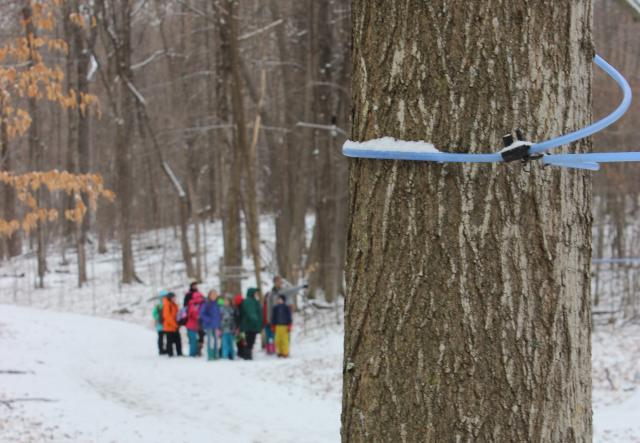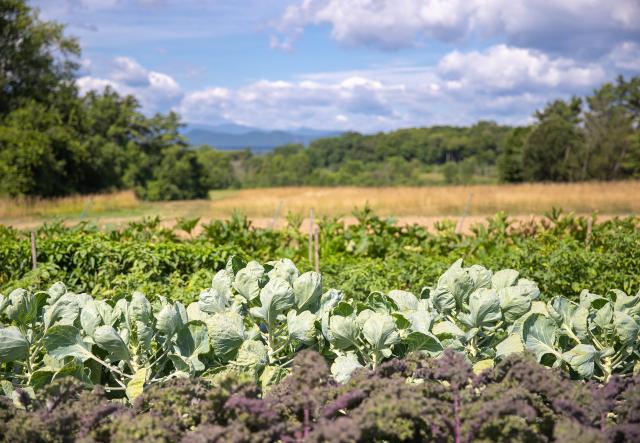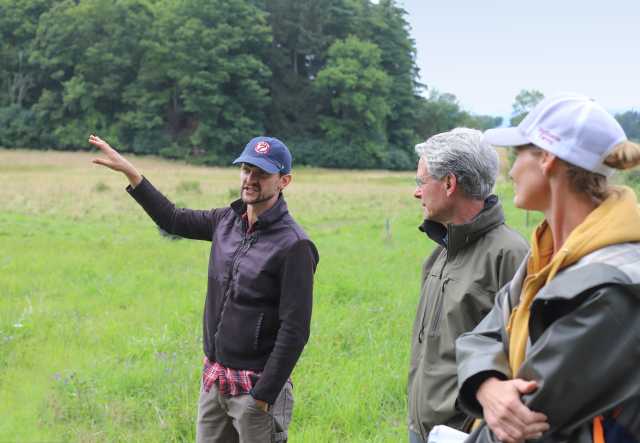Dairy Farming in a Changing Climate
On September 5, we welcomed well over 100 grass-based farmers from around the country as part of a National Grazing Lands Coalition Tour. Dairy manager Sam Dixon spent time with them explaining Shelburne Farms' managed grazing system, how climate change is shifting the already unpredictable business of dairy farming, and what we’re doing about it.
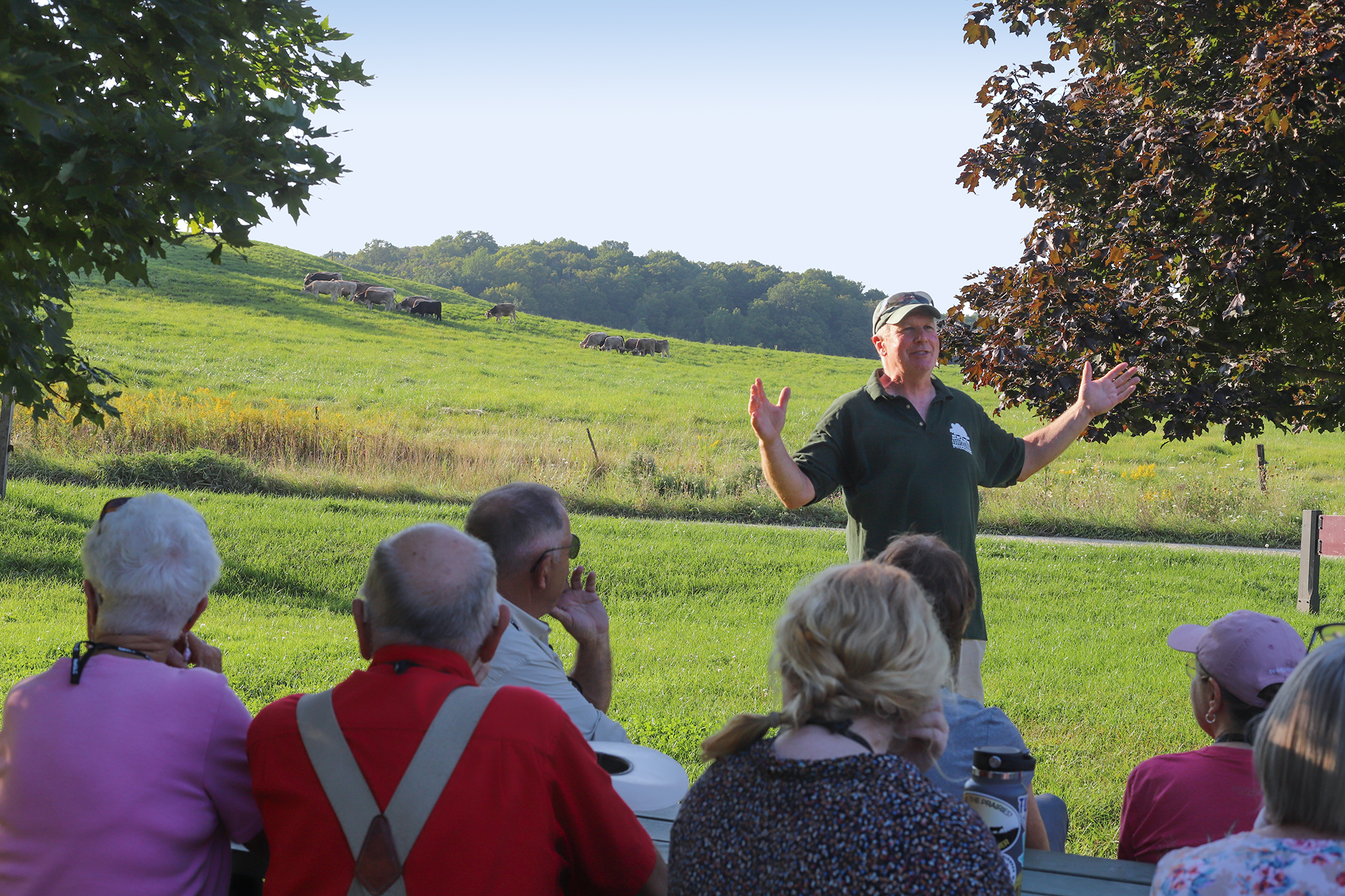
As Sam discusses our managed grazing system to the visiting farmers, he starts a lot of sentences with “Normally,...” or, “In a normal year…” Because this year was not normal. Anywhere. As the rest of the world blistered under the hottest year on record, Shelburne Farms experienced a relatively cool and wet grazing season, but with hugely damaging floods in other areas of the state. What did it mean for grazing at the dairy?
In the “normal” arc of the season, Sam puts the cows out on pasture the first week or two of May. They start by grazing one pasture each day, but soon, with the flush of green growth, he and his crew will move the cows to a fresh pasture every 12 hours, between each milking. This pattern of managed grazing continues until pasture growth slows in late July or early August. Then he’ll return to the one-pasture-a-day schedule through September or early October.

This year, the weather allowed Sam to put the cows out on pasture at the earliest spring date ever: April 30. And with the rainy summer, he didn’t switch back to his one-pasture-a-day rotation until early September, more than a month later than a typical year. (We don’t know yet how late grazing will continue into the fall.)
Sam plans on 160 days of grazing, “But that’s changing,” he says, “We may be looking at longer pasture seasons.” We certainly have this year. So far we’ve used 100 fewer round bales for feed. In some ways, that sounds like a good thing: more grazing means less reliance on grains and less harvesting with fossil fuels. Is that reliable year to year?
And while the cool wet weather is great for pasture grasses, it’s been hard on haying. Across Vermont, stretches of dry weather for haying have been scarce. The warm sunny days over Labor Day were a rare and welcome window for second and third cuts, but even then, the soggy underlying soils and the humidity posed challenges for our haying team and for the hay quality.

This summer is consistent with the University of Vermont’s Climate Assessment 2021, which estimated that precipitation has increased by 21% since 1900. The study also found that the state’s average temperature has warmed by nearly 2 degrees Fahrenheit, and it predicts more floods and droughts.
Farmers have always operated under environmental forces they can’t control and can rarely predict. But predicting at all just got harder. That’s the new “normal.”
Sam, with his eyes and ears always close to the land, is noticing other changes, too. “Snow is coming later and leaving sooner,” he shares. “In the last eight years, we’ve only had lake ice in front of the farm once.” Then there’s this summer. “We couldn’t see the lake from the dairy with the smoke [from wildfires in Quebec],” Sam recounts. “We’ve never had that happen.”
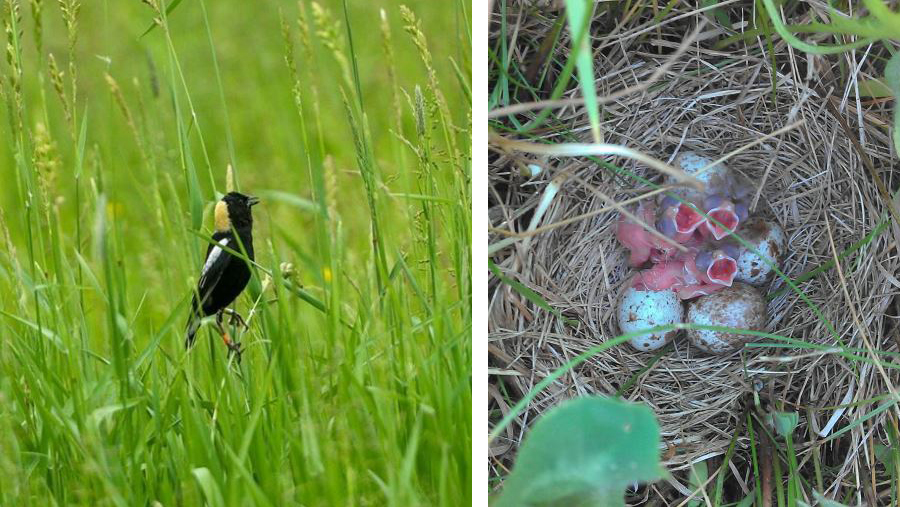
He’s noticed fauna fluctuations, too. For years, cattle egrets would unfailingly arrive at the farm in April, though the region was always marginal habitat. They slowly dwindled, and Sam hasn’t seen any for five years. Last year, though, he saw his first black vultures on the farm, a species typically found south of Vermont. And this season, researcher Noah Perlut, who has been studying grassland birds at Shelburne Farms for decades, recorded fewer nesting Bobolinks. According to Noah, a lot of birds are disappearing in giant storms, or showing up in food markets in Cuba. “Is it just a blip?” asks Sam.
We don’t have the answer, and we don’t know if all these observations are linked to climate change, but we do know we have to act, both at the dairy and throughout the organization. That’s why we have a Climate Action plan to reach net zero emissions by 2028.
As Sam puts it, “How can we get to a point where we are sequestering more carbon than we are emitting on the farm?” There are two approaches he shares with the farmers: mitigation and sequestration.
To mitigate the dairy’s climate gas emissions–primarily methane and nitrous oxide–Sam is, “looking at the what and how of feeding our cows.” He’s introduced a linseed supplement into their diet to test whether that reduces methane. Soon, we’ll be experimenting with encouraging forage species that reduce cow methane emissions. We’re also adding a semi-permeable layer of biochar to the surface of our manure pits. Some studies indicate that biochar will trap and stabilize nitrous oxide, and can then be spread on–and retained in–pasture soil.
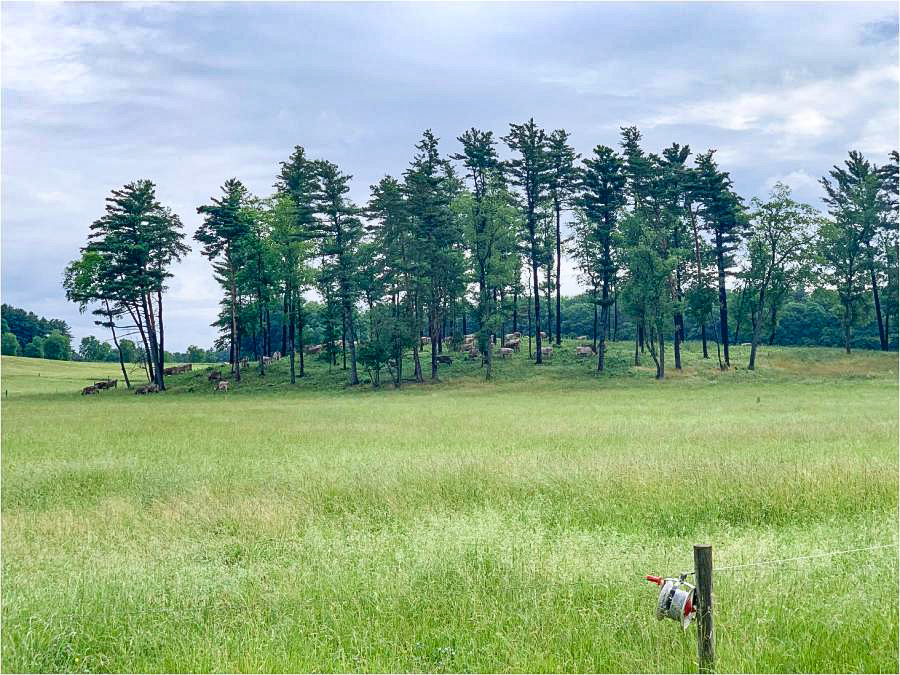
To sequester carbon, we’re incorporating trees into some pasture areas (“silvopasture”). That’s above and beyond the high organic matter already in our pasture soils, the result of decades of managed grazing. According to Sam’s records, our managed pastures have very high levels of organic matter – around 8%. A rough estimate for all of Vermont’s agricultural land puts that value at 4.3%.
One final point Sam makes clear: Unlike the one-way release of carbon from burning fossil fuels, carbon on the farm is part of a cycle. It needs a different kind of approach and understanding. “We’ve been working to provide environmental benefits through farming for a long time,” Sam says, “It’s an evolving project.”
Why does Shelburne Farms raise cows in a world challenged by climate change? Read our statement.

